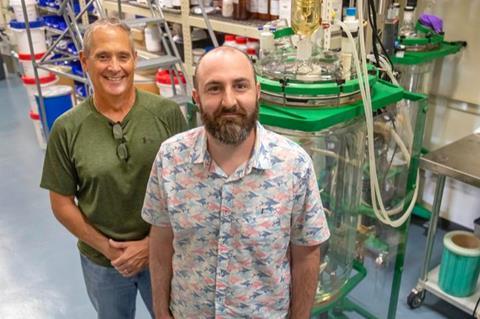Southwest Research Institute (SwRI) is collaborating with The University of Texas at San Antonio (UTSA) to explore and develop a novel platform or chemical process for synthesizing antibiotic compounds with a $125,000 grant. The project, one of two winning proposals this cycle, is supported by the Connecting through Research Partnerships (Connect) program designed to foster collaboration between SwRI and UTSA.

“SwRI and UTSA will work together to combat the growing threat antimicrobial resistance poses to global health by developing a proof-of-concept platform to potentially create a whole library of new antibiotics,” said Dr. Shawn Blumberg, a lead scientist in SwRI’s Chemistry and Chemical Engineering Division and co-principal investigator (PI) of the project.
READ MORE: Novel compounds promise success in the fight against tuberculosis and depression
READ MORE: Cockroaches can transmit antimicrobial resistance genes between groups
The World Health Organization (WHO) estimates antimicrobial resistance (AMR) is either a direct cause or a contributing factor in millions of deaths worldwide each year. The crisis is exacerbated by what WHO calls “an antibiotics pipeline and access crisis.”
Pipeline of antibiotics
Blumberg and his co-PI, Dr. Stanton F. McHardy of UTSA’s College of Sciences, will focus on creating a pipeline of new polycyclic antibiotics. This class of antibiotics includes tetracyclines, commonly used to treat pneumonia; anthracyclines, used to fight cancer; and polycyclic xanthones, natural compounds with known health benefits.
“Polycyclic xanthones offer a variety of potential therapeutic applications, but they haven’t been assessed yet,” said McHardy. “With the new synthesis process, we’re hoping to rapidly access a unique class of chemical building blocks, structural analogs and new compounds.”
The team plans to use the process to discover more effective tetracycline antibiotics and safer anthracycline treatments with fewer side effects. Blumberg and McHardy also hope to create synthetic polycyclic xanthones that can mimic natural analogues while delivering new mechanisms of action, or new ways of fighting infections.
Relay race
To achieve their goals, Blumberg and McHardy say they’ll tap into the unique reactivity of dendralenes, which are chemical compounds used to “glue” molecular fragments together in a single step. Their goal is to rapidly explore and discover new treatments while improving or finding new techniques to tweak the structure of existing antibiotics to improve safety, reverse resistance and combat AMR worldwide.
“I like to think of it as a relay race,” said Blumberg, “SwRI will procure and synthesize advanced starting materials to deliver to UTSA. Then Dr. McHardy and his team will screen those materials to identify optimal conditions for achieving our desired chemical outcome. With those findings, SwRI will begin to synthesize additional materials until the molecular fragments are stitched together as designed.”
The project will run through July of 2025. For more information, visit https://www.swri.org/industries/pharmaceutical-development.




No comments yet